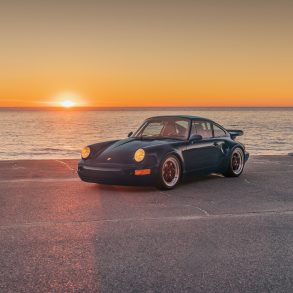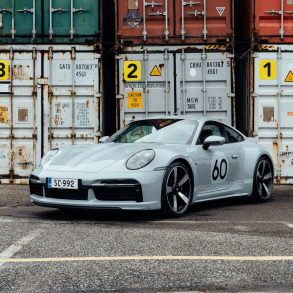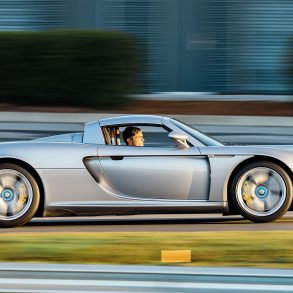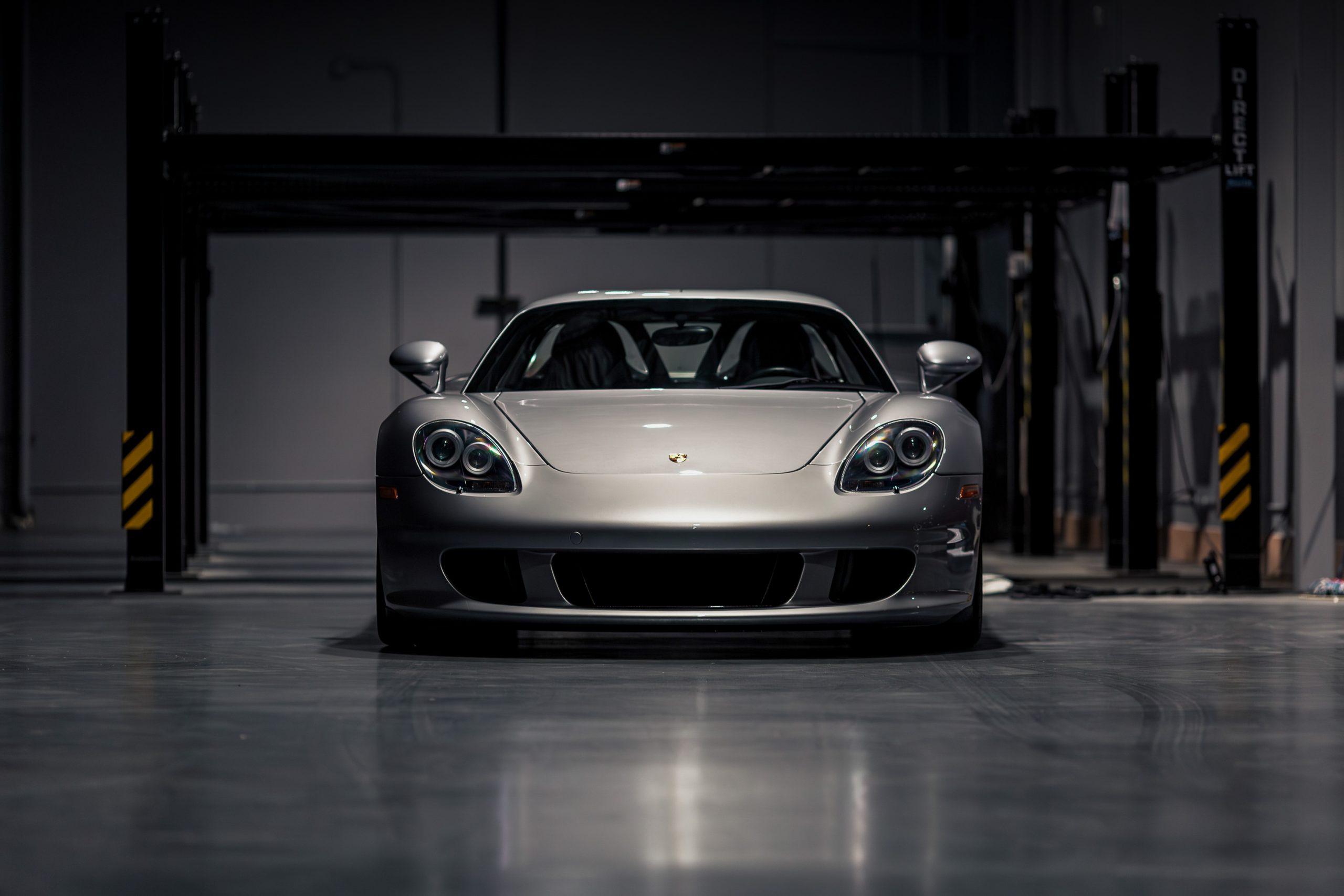Written by Glen Smale. Images by: Glen Smale & Pocher
In a tribute to Porsche’s unrivalled success at Le Mans, Pocher, a leading manufacturer of high-quality model kits, has launched this new and exciting 1:8 model kit. For more than sixty years, this manufacturer’s unparalleled craftsmanship and meticulous attention to detail have defined the standard of excellence in model car engineering.

The importance of the Porsche 917 KH and LH in the manufacturer’s sporting heritage cannot be overemphasised. During the decade of the 1960s, Porsche steadily gained ground on its competitors each season, with its smaller-engined race cars. But it still didn’t have a powerful enough racing car to win the most coveted race of all, the Le Mans 24 Hours. That is, until 1969, when the Porsche 917 was introduced. In its first year of competition, the 917 was still an ill-handling racer, but it laid the foundation for what was to follow. In that first year, the No. 12 917 LH of Vic Elford and Richard Attwood started from second position on the grid, and then led the race from the fourth to the 21st hour when it retired with clutch failure. It didn’t win, but it certainly gave notice to its rivals of its future intentions.
In 1970, Porsche achieved its goal by winning the Le Mans 24 Hours race with the now-famous red/white-liveried No. 23 917 KH, driven by Richard Attwood and Hans Herrmann. Porsche had claimed its first Le Mans victory, but only one year remained before the existing regulations, which still permitted the 917 to compete, expired. There was simply no alternative for the Stuttgart manufacturer but to win the race a second time while they still could.
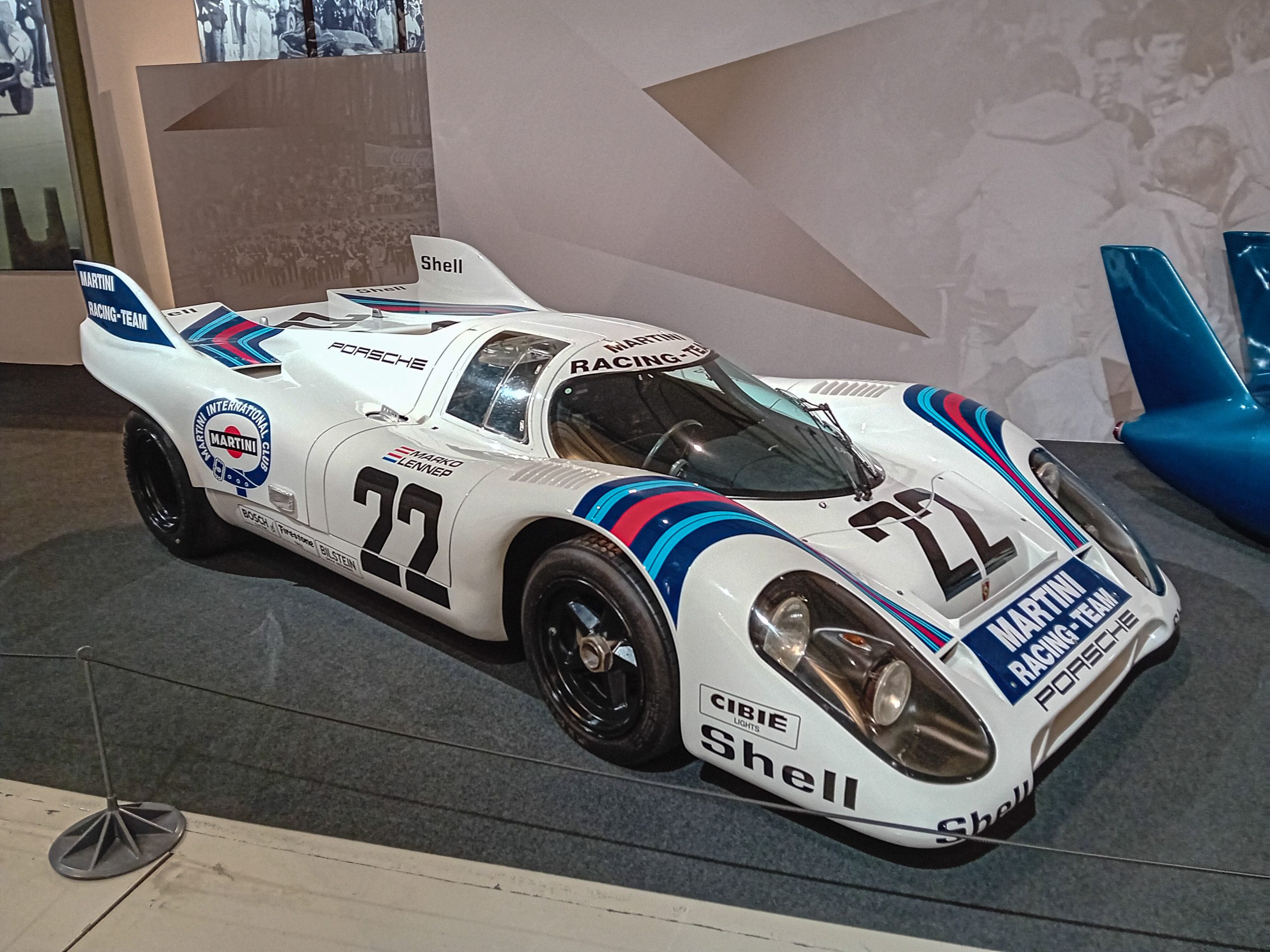
Behind the wheel of the No. 22 Martini Porsche 917 KH at the 1971 Le Mans race was the regular pairing of Austrian DrHelmut Marko (Doctor of Law) and the Dutch driver Gijs van Lennep. They weren’t the favoured pairing in the Martini camp; that honour went to the No. 21 917 LH of Elford/Larrousse. The No. 22 car had qualified back in fifth place on the starting grid, but theirs wasno ordinary 917 KH. The No. 22 Marko/van Lennep Porsche(chassis #053) was the last of the 917s to be produced, and featured a magnesium chassis instead of the regular aluminium one. This was a closely guarded secret within the Porsche race department, and neither of the two drivers knew this fact before the race.
During the race, one by one, the fastest cars retired, including the Gulf 917s and the Ferrari 512 M of Donohue/Hobbs, promoting the No. 22 917 KH up the order each time another car ahead retired. They kept up a blistering pace, and by the halfway mark, the Marko/van Lennep Porsche took the lead with a commanding five-lap advantage over the second-placed Matra. Having lost its front-left headlamp along the way, the one issue that worried the Porsche pit was the condition of the front brake discs, which were cracking as the laps were reeled off. As the race drew to a close, the drivers were ordered to ease off the throttle in order to save the brakes, but the No. 22 Porsche had a sufficient cushion, crossing the line two laps ahead of the No. 19 Gulf Porsche KH driven by Attwood/Müller.
While the Porsche 917 LH may have been faster than its KH sibling, no LH version of the mighty 917 ever won at Le Mans. The KH version is thus the king of the classic French endurance race, winning in both 1970 and 1971.
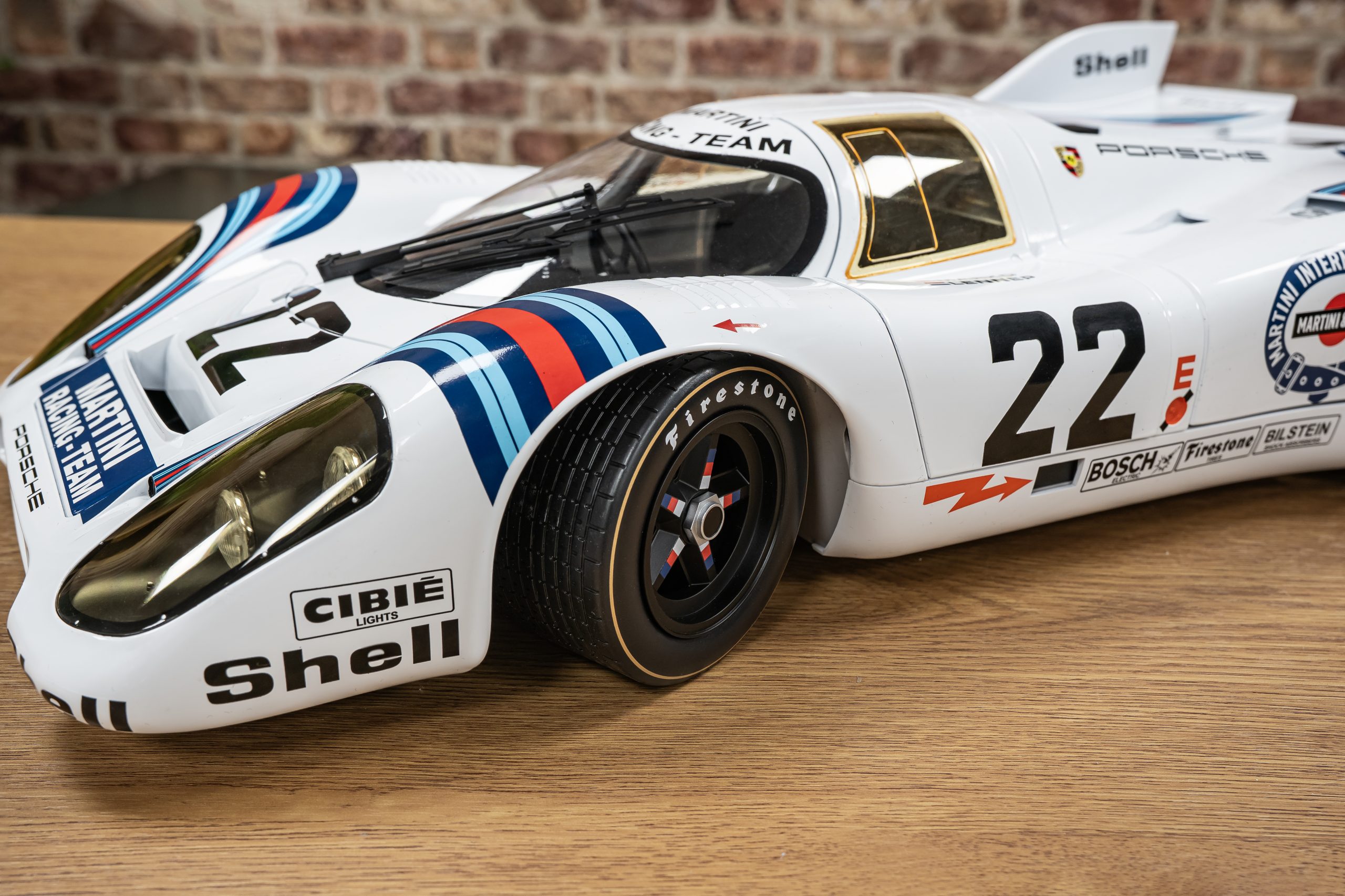
The significance of this Porsche victory was that Marko/van Lennep established a speed and distance record that stood for the next 39 years. The No. 22 Porsche was the first car to cover more than 5,000 kilometres in 24 hours, covering 5,335.313 kilometres at an average speed of 222.304 kilometres per hour (the distance record was eventually broken in 2010 by Audi). For this reason, the victorious Porsche 917 KH from 1971 is every bit as important for Porsche as its first win in 1970.
The Model
Be under no illusion, when it arrives, this is not a small package. But then you probably knew that when you ordered yours, and you’ve probably also already cleared out the spare bedroom as your temporary model workshop for the next few months. So, it’s time to get building!
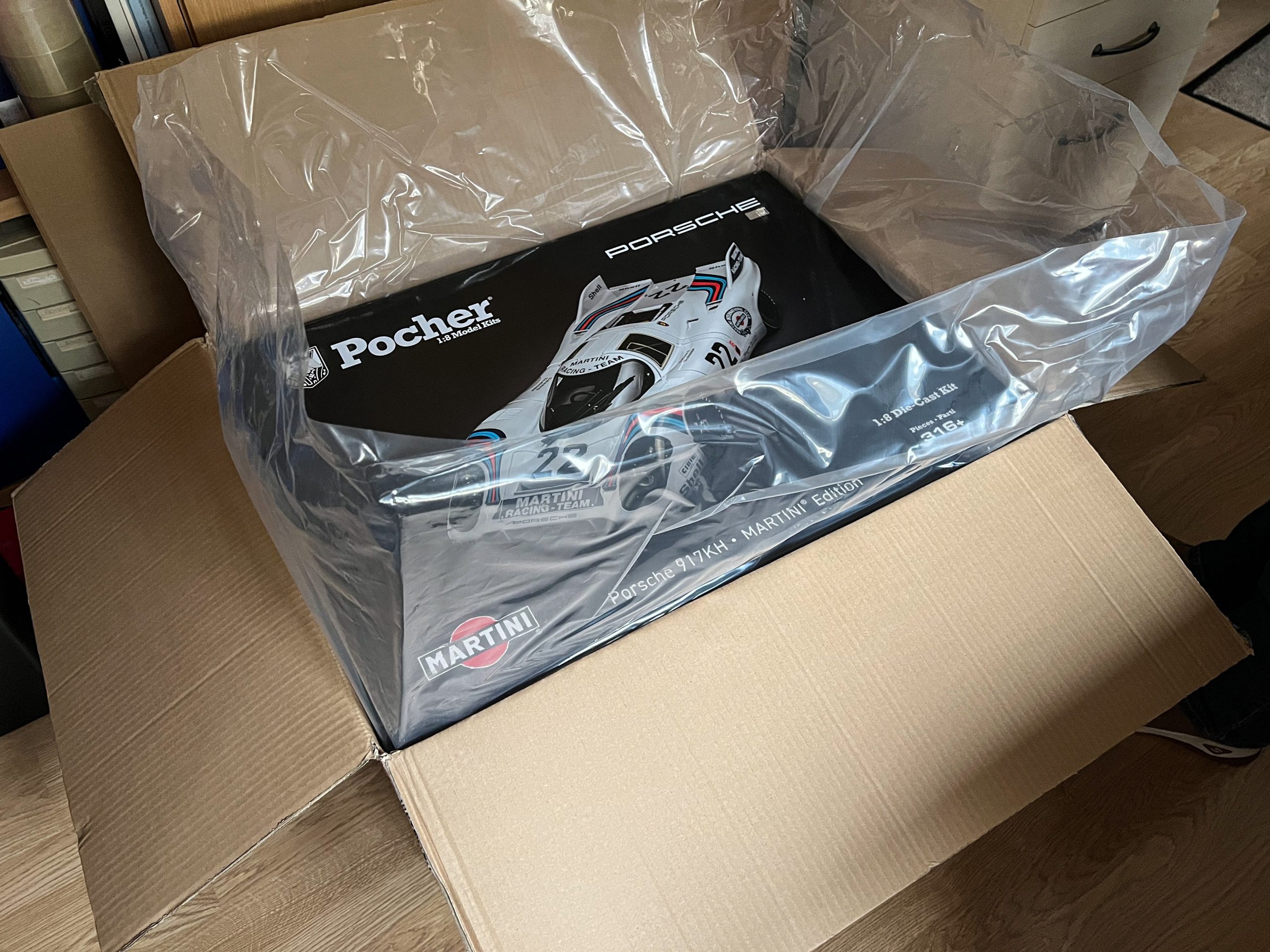
This officially licensed model accurately recreates the victorious Porsche 917 KH from 1971, which gave the Stuttgart manufacturer its second consecutive Le Mans title. This Pocher model features over 316 pre-decorated parts and more than 200 screws, ensuring a masterpiece of engineering detail when complete.
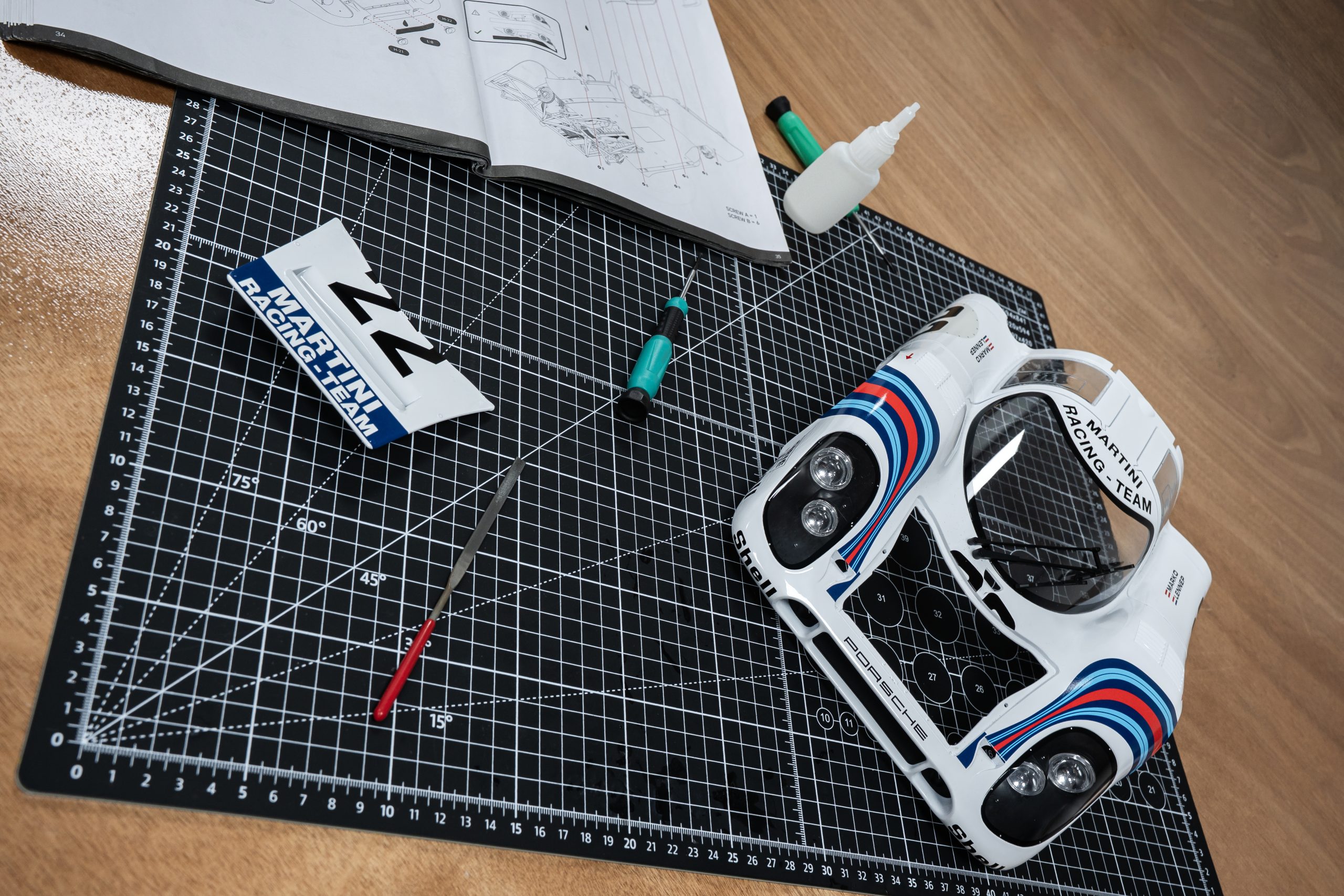
Model builders will take immense satisfaction from the experience of assembling this model, which boasts working suspension, functional steering, moving doors, and a clamshell engine cover that opens to reveal the car’s intricately detailed powertrain.
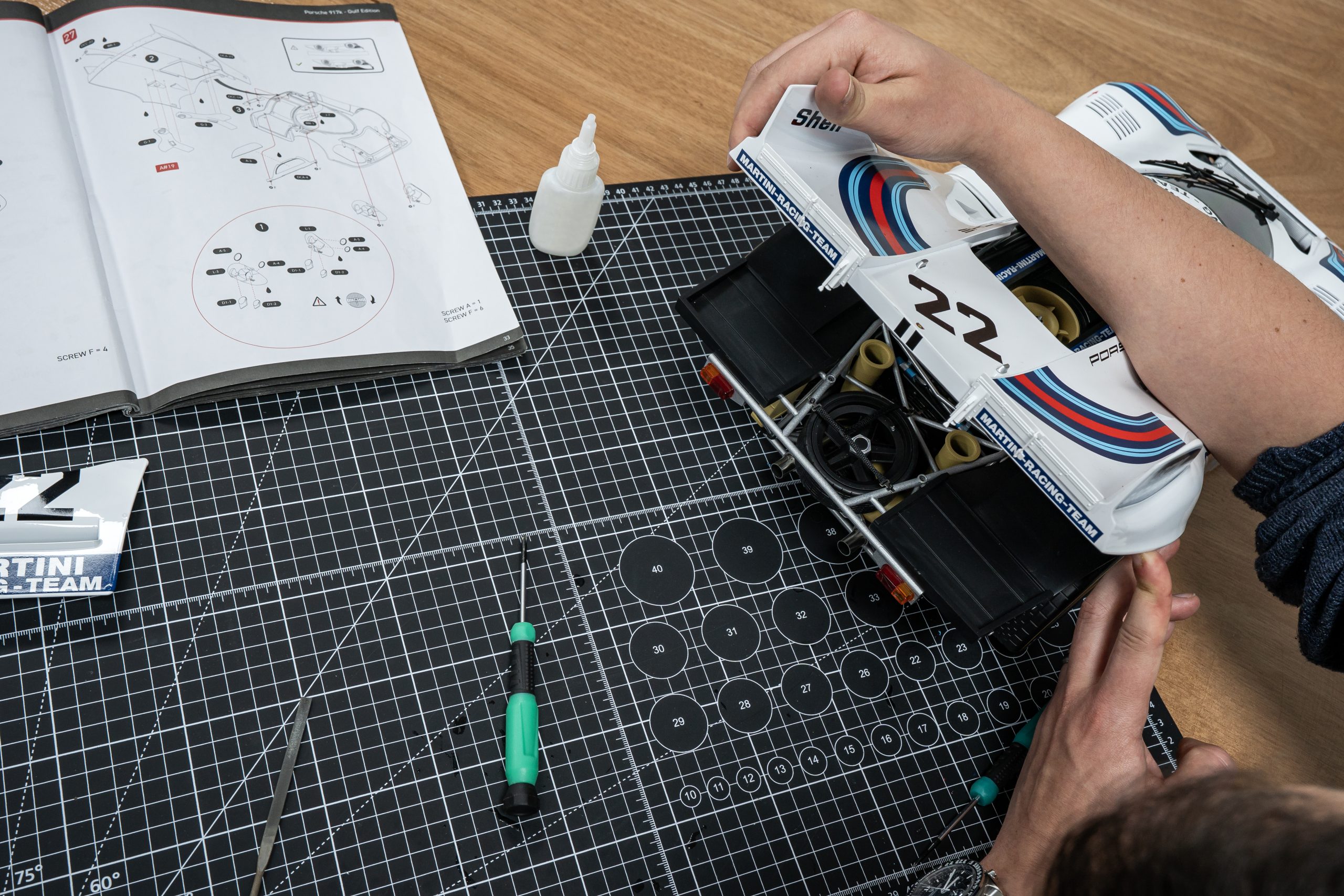
Externally, the evocative Martini Racing livery is authentically reproduced, showcasing those unmistakably striking blue and red stripes that have become synonymous with so many winning Porsches on the track.
Making The Model
The model has been designed in a modular fashion, breaking down the overall build into manageable subassemblies. This allows model builders to tackle smaller, less daunting sections one at a time. “We tried to have the vehicle come together in a similar way to the way the vehicle was built, which is why the engine is a bit of a squeeze to fit in,” said George, Pocher Lead Engineer.
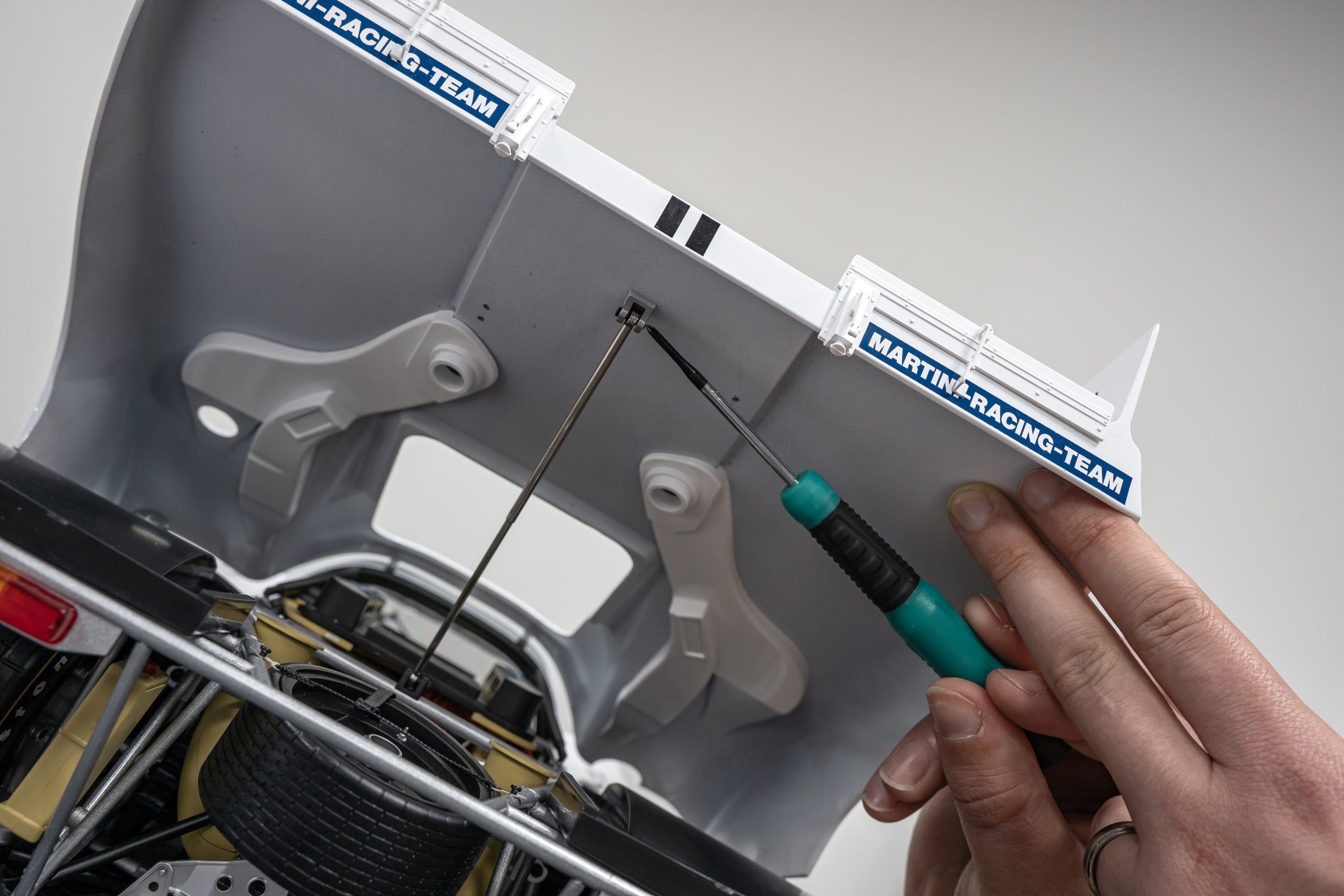
But what is original? Ensuring accuracy is a challenge not only because these cars are over 50 years old, but even in period that might change from race to race. Engines were swapped depending on reliability or race demands, and liveries, too, might reflect different commercial agreements at the time. During a racing season, a race car might undergo development, or be fitted with a different aero package homologated at the time of the car’s introduction. Another big factor is damage: a race car might be dismantled after an accident, with another car replacing it. So, originality is a difficult thing to replicate.

“One particularly difficult aspect was getting access to an engine out of the car, as a lot of detail is hidden behind body panels, frames, and tubes. Capturing the intricate details and precise measurements of the original Porsche 917 requires extensive research and access to original drawings, photographs and expert consultations,” George shared. Understandably, Porsche didn’t provide any blueprints or designs of the original car, so the design team had to rely in this respect on information supplied by knowledgeable and willing third parties.
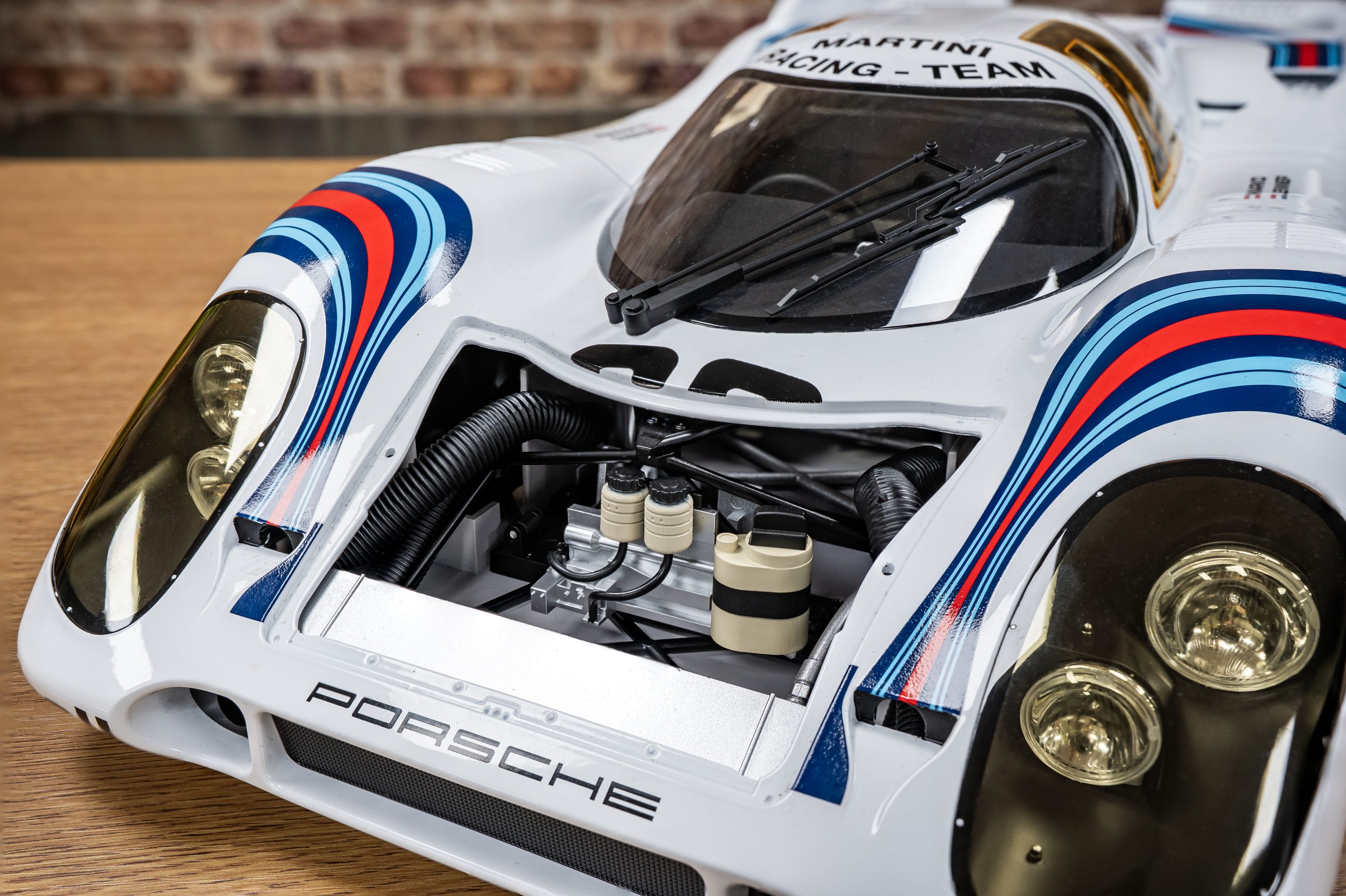
The primary material for the model is die-cast metal, typically zinc alloy, complemented by high-quality plastics, rubber, and small amounts of stainless steel for specific components. What were some of the most pleasing aspects of the car to design and develop? George replied, “We’ve made the fan spin, the brake callipers and discs are finely detailed, and I like all the detail that we’ve put into the dashboard.”
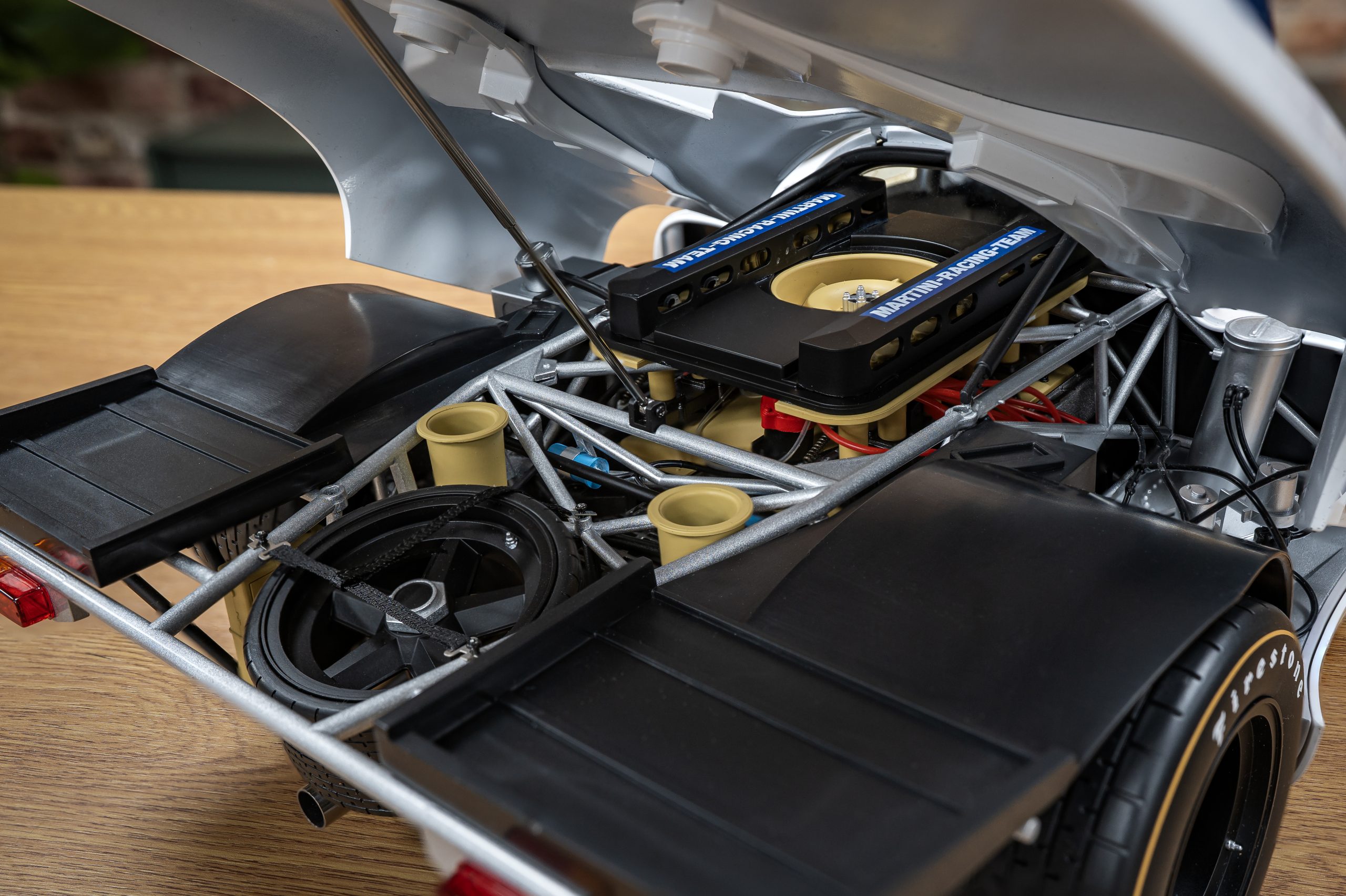
Pocher provides a handy online instruction manual, divided into four convenient parts. The online instruction manual can be expanded on-screen to suit your requirements, making it easier for model builders to focus in on detailed assembly. Part 1 covers the engine assembly process; Part 2 covers further engine assembly and installation, front suspension, the cockpit and some chassis assembly; Part 3 covers the rear suspension, wheels and tyres, and bodywork; and Part 4 covers outstanding bodywork details and the application of the livery.
Final Word
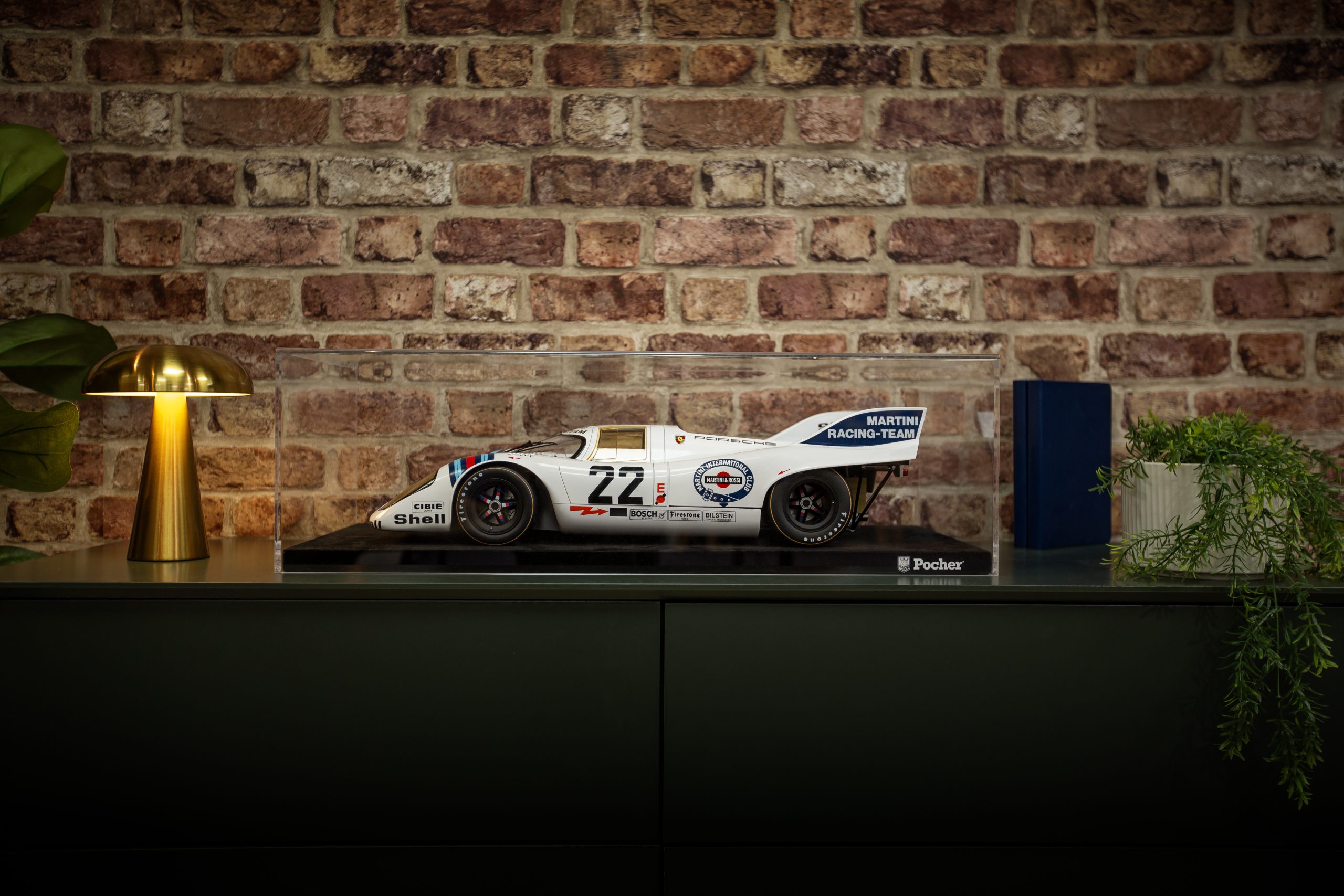
Being pre-painted, the Pocher Martini Porsche 917 KH 1:8 scale model kit is ideal for both seasoned model builders and collectors alike. For serious collectors, a sturdy transparent case can be purchased separately to protect your completed model from dust and damage, making it ideal for display.
Dimensions
- Model length – without packaging 52.2cm
- Model height – without packaging 13.5cm
- Model width – without packaging 26.7cm
- Model weight – without packaging 6kilograms
- Package length – 76.5 cm
- Package height – 40 cm
- Package width – 57 cm
- Package weight – 15 kilograms
- Model scale 1:8 Scale
The model can be purchased from pocher.com, and select model shops.


